California Indian baskets are often considered the best in North America, and Pomo baskets are generally considered to be the best of the California baskets. In his book Encyclopedia of Native American Tribes, Carl Waldman reports:
“The Pomos created their beautiful baskets for functional purposes, but collectors now value them as works of fine art. In some Pomo baskets, the weaving is so tight that a microscope is needed to count the stitches.”
The aboriginal Pomo territory was about 50 miles north of present-day San Francisco. Pomo territory included the Pacific Coast and extended some distance inland as far as Clear Lake. Like other California tribes, they lived in small villages. There was no single Pomo tribe, rather, the designation “Pomo” groups together about 72 independent tribes. Some of these tribes had only 125 or so members, while others had more than 500.
With regard to language, Kathleen Rose Smith and Beverly Ortiz, in their entry on the Pomo in the Encyclopedia of North American Indians, write:
“The members of each Pomoam tribe spoke a dialect of one of seven related but distinct languages.”
Pomo is a part of the larger Hokan language family.
Unlike the coastal tribes to the south of them, the Pomos were never congregated into mission villages by the Spanish. The Pomos were, however, influenced by the Russians who established a trading post in their territory in 1812.
Shown below are some of the Pomo baskets on display in the Maryhill Museum of Art near Goldendale, Washington.
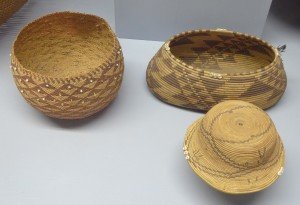
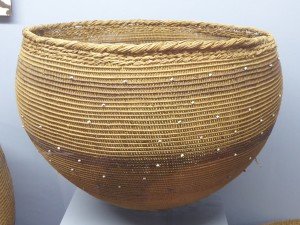
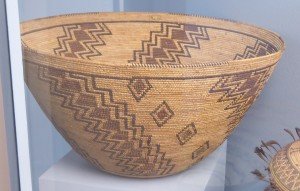
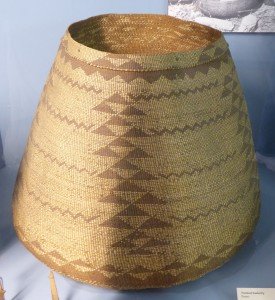
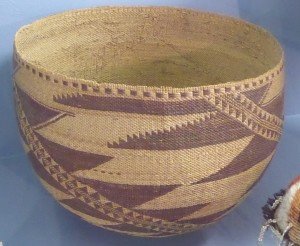
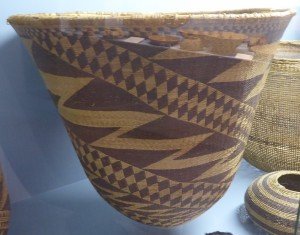
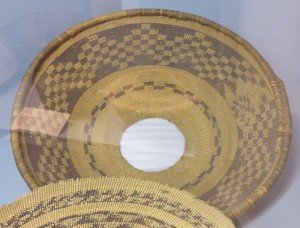
Shown above is a Pomo hopper. These were used when grinding acorns into flour on a stone mortar.
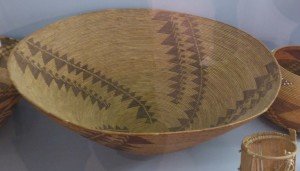
Shown above is a Pomo wedding basket. Baskets such as this were given in an exchange of gifts between the couple’s families.
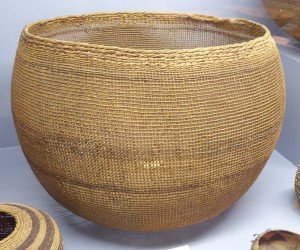
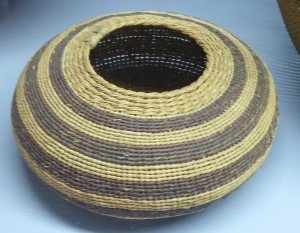
Shown above is a large Pomo storage basket.
According to the Museum display:
“Large baskets woven in openwork lattice twining were used to store acorns, an important food among Northern California tribes. After the acorns were shelled and ground into flour, tannic acid had to be leached out of the meal to make it edible. Women made a depression in the sand along a river, filled it with acorn flour, and poured water over it to remove the acids. The meal could them be made into mush.”
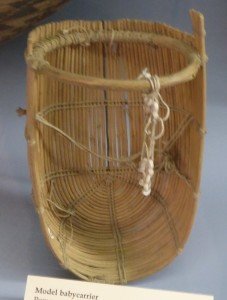
Coiled Basketry
With regard to Pomo coiled basketry, the Museum exhibit explains:
“The Pomo made coiled baskets in a variety of shapes and sizes, often decorated with feathers and shell or glass beads. They used either a one rod or a three rod foundation coil. The decorative patterns are frequently based on diagonal lines with zigzags and serration along the edges. Although some of these baskets were meant for use by the Pomo themselves, many were made for sale to basket collectors.”
Shown below are some examples of Pomo coiled basketry:
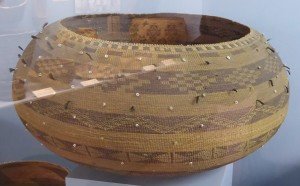
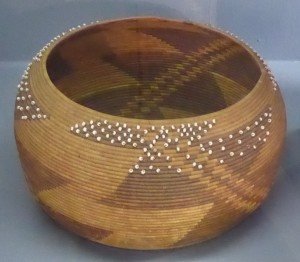
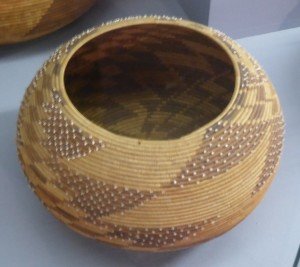
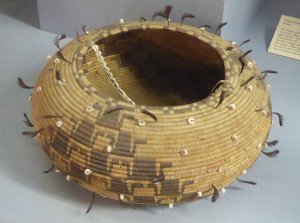
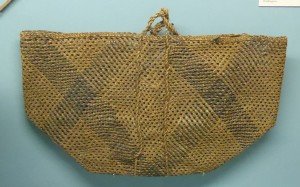
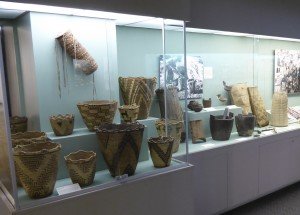
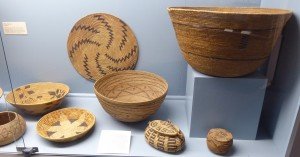
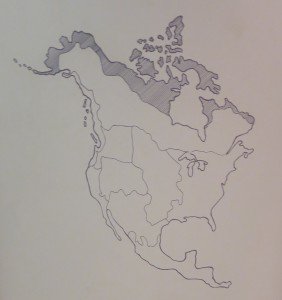
Leave a Reply